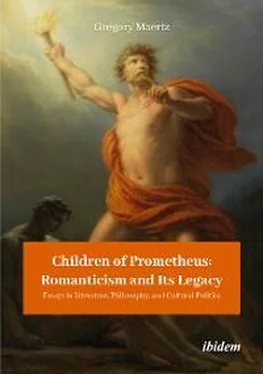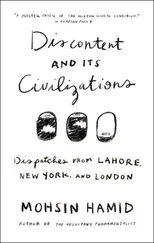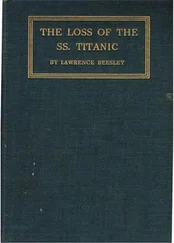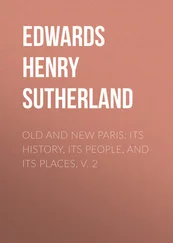For obvious reasons, it is easier to discuss an essay or a poem of more recent vintage than an older one. The latter case requires a more strenuous exercise of the sympathetic imagination and the historical understanding than the former. Moreover, it may also involve a consideration of such “difficult” matters as belief and value, which still retain importance for writers of an age perhaps more innocent than ours. Attempts at bridging the gap between “the divided and distinguished worlds” of the past and present are often regarded by partisans of formalism as essays into the “history of ideas,” as if to imply purity of motives as well as it has become an act proscribed by rigid taboos. Making an excursion into the sensitive areas of thought and belief is to venture into forbidden territory. Of course, there is no denying that the task facing historical-humanistic scholarship becomes increasingly beyond our strength. It is not that, over time, the burden of historical facts becomes ever more cumbersome, but rather the longer ideas are allowed to lie fallow the more difficult it is to restore them imaginatively to common usage as accoutrements of the modern mind, even for as long as a brief literary exercise. But even a failed attempt to treat an idea sympathetically, infusing it with the credibility and the truth it enjoyed in the writer’s mind, is preferable to a stylistic analysis which avoids the ideas expressed on the printed page, or treats them with derision or condescension.
Let us return to Symonds’s remark on the probable source of paradox in Religio Medici: It “does not seem to belong to the man so much as to the artist.” In the preface “To The Reader” in the authorized edition of 1643 Browne seems to support this conclusion by inserting the following proviso: “There are many things delivered Rhetorically, many expressions therein merely Tropicall, and as they best illustrate my intention; and therefore also there many things to be taken in a soft and flexible sense, and not to be called unto the rigid test of reason.” 4Browne wrote this, no doubt, to avert the criticism of those who might take exception to his “sundry particularities and personall expressions.” (3) Just to be safe he reminds the reader that “what is delivered therein was rather a memoriall unto me than an example or rule unto any other,” whose “intention was not publick.” (3) Instantly, one wonders how seriously these qualifications are meant to be taken. Should the reader not beware of falling prey to Browne’s ironic, conciliatory manner in the “To The Reader” (which follows the composition of Religio Medici by a decade), thereby suspending his judgment before examining the main body of meditations? That Browne dons a shy, self-effacing mask is not owing to his embarrassment over a callow enterprise of his youth. Undoubtedly, he is aware of the difficulties involved in appreciating some of his conclusions, which are based on the immaterial foundation of religious conviction and tend to follow the suprarational dictates of faith. What are Browne’s half-ironical strictures if not warnings to the reader that a supernatural logic has endued his meditations?
The reader has, it seems, two choices. Either they take Browne at his word and agree not to submit these “private conceptions” to scrutiny. This is the stance of formalism. Or, if the reader has it in mind to ignore Browne’s mature proviso and sets out to identify the pattern in Browne’s skein of thoughts, they risk getting caught in the snares of Browne’s paradoxes. That is, unless the reader succeeds beforehand in ferreting out the source of paradox in Browne’s meditations.
Perhaps, “the sustained paradox in his thought” has its origin not in Browne the artist, but rather in Browne the religious thinker? All great art (and, for that matter, every human order stabilized by tradition) rests on a fundamentally fixed correspondence between the answers that may be given on varying levels of profundity and with varying degrees of precision, but they are all recognizable by their basic color as the more or less right answers. Indeed, the imagination seeks out new waters in lands which have long remained inaccessible and unexplored, but there will be a place for them, hitherto left blank, on the maps of the familiar world. In Religio Medici we confront one such remote sphere where we survey the inner landscape of religious experience. To be sure, there are some important resemblances shared by aesthetic and ethical-philosophical (or religious) modes of expression and understanding. Both depend on the synthesizing power of the imagination, “the faculty . . . by which we unite the broken and dispersed images of the world into a harmonious poetic symbol . . . . The power of subjecting the less to the greater reality, of associating the outer with the inner, and thus of finding through the many that return to the one.” 5
In Religio Medici, the “religion of a physician,” the strands of poetry and philosophy are woven together to form a double-layered fabric, which shows on one side the pattern of paradox, and, on the other, the union of contraries. W.P. Dunn ascribed this power of integration to Browne the “natural believer, who really knew that the intellect is not the only road to truth, and who by virtue of that instinct managed to unify the world.” 6The synthetic tendency of Browne’s mind, which first isolates and then yokes such opposites as faith and reason, good and evil, art and philosophy, Christianity and paganism, the universal and the particular, angel and human being, is captured in a memorable passage in Section 34 of Religio Medici:
We are only that amphibious piece between a corporall and spirituall essence, that middle forme that linkes those two together, and makes good the method of God and nature, that jumps not from extreames, but unites the incompatible distances by some middle and participating natures . . . (32)
Human beings occupy the middle position between heavenly benediction and earthly squalor. Equidistant from resurrection and damnation, each person is “that great and true Amphibium, whose nature is disposed to life not only like other creatures in divers elements, but in divided and distinguished worlds.” (32)
It is necessary only to cite the Dialogues of Plato or the biblical parables of Søren Kierkegaard (1813–1855) in order to suggest the rich allusiveness, the play of irony, and the dramatic tension that belong to both strictly literary works and some philosophical tracts. Even if Samuel Taylor Coleridge’s appraisal of Browne’s metaphysics is not the last word on the subject, his famous remark on Religio Medici underscores its uncertain position in the hierarchy of literary genres. Coleridge (1772–1834), the great Romantic poet and critic, argues that Browne’s book should be considered “in a dramatic, and not in a metaphysical view, as the sweet exhibition of character and passion, and not as an expression or investigation of positive truth.” 7That is to say that one may still find pleasure in reading Religio Medici in spite of Browne’s obtruding philosophical preoccupations. It is neither to deny the importance of Browne’s ideas nor relegate them to a dark lumber room in the mansion of literature.
The case of Kierkegaard offers an especially illuminating parallel to Browne. Not only does he disclaim responsibility for his books far more vehemently than Browne; he goes so far as to disguise them as anonymous epistles and religious parables, and then published them under a pseudonym. Nevertheless, no one would dispute the seriousness or the enduring relevance of the disinherited offspring of his mind. In addition, Kierkegaard is recognized as one of the masters of Danish prose. And yet, at the first sign of ambivalence—just a sentence or two written in a tone of mild reproof against the enthusiasms of his youth—many English critics are prepared to ignore Browne’s meditations altogether, as though unaware that the style and tone of Religio Medici are derived from his religious temperament and concerns. For example, Edward Dowden argues that Browne’s work is “not modeled on the articles of a creed, but is far more the exposition of a religious temper; it concerns itself with the Christian graces.” 8Furthermore, Kierkegaard knew the contradictions of logic and willing lodged in faith as well as the difficulties encountered in sustaining the irrational premises of belief against the visible evidence of natural laws. For Kierkegaard, “faith is not an aesthetic emotion, but something far higher . . . it is not an immediate instinct of the heart, but is the paradox of life and existence,” the yoking of the particular and the universal in the relationship of worshipping believer and adoring God. 9Kierkegaard’s faith, as well as Browne’s, rests upon “a paradox, inaccessible to thought.” For, in Browne’s phrase, “to credit ordinary and visible objects is not faith, but perswasion.” (11) In his parable of Abraham and Isaac upon Mount Moriah, Kierkegaard identifies the man of faith as him “whose life is not merely the most paradoxical that can be thought but so paradoxical that it cannot be thought at all. He acts by virtue of the absurd,” 10as Browne does when he pursues his reason “to an O altitudo.” (11)
Читать дальше












